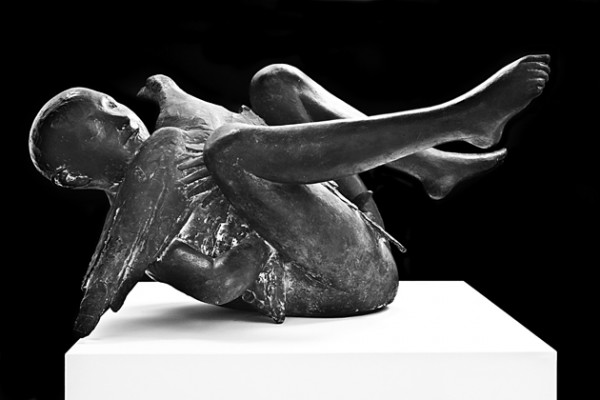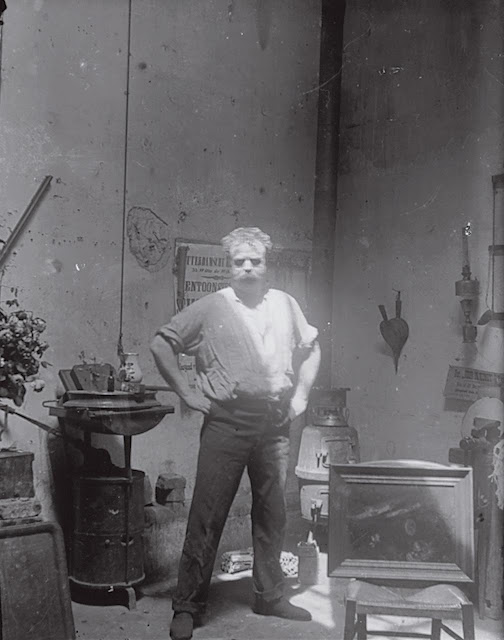Examples of Figurative Sculpture
Background: This blog is created for students studying figurative sculpture. Below are figurative sculpture examples by various artists. There is no chronology in the listing of these artists. I will send a notification when I add more examples or technical information to share. If you respond to a particular artist, continue your search and seek out where to see examples of their work in person. There is nothing like seeing a work of art in person. You will be able to observe the pieces in terms of the three-dimensional flow of movement, form, and surface. Take note of the artists you respond to and why. It is essential that you learn from the art that you love as much as from the study of technique. Unless you are a forensic artist, anatomy alone will not provide you with the tools to make sculpture.


example of an ecorche (flayed figure)sculpture
Houdon-Ecorche
Ecorche created in Z-Brush (computer software)
Examples of Figure Sculpture
Please notice that the details are always subordinate to the whole. Thing of the largest shape that can contain the entire pose, this helps with proportion and design. Is it a triangular pose, what kinds of connections can you make that join together different parts? Look at the sculptures and see the importance in the use of negative space (space around and in between forms) and silhouette. See the different rhythmic connections that move across the entire figure as well as around it. Remember that the basic forms of sphere, ovoid, cylinder, box, and rectilinear form can be used to construct compound forms.
Degas was a painter who sculpted to better understand his subject matter, although he was clearly an accomplished sculptor as well. His sculpture of the Young Fourteen Year Old Dancer was a groundbreaking piece because of its use of fabric with traditional bronze casting. This work can be seen at The Philadelphia Museum of Art. The Metropolitan Museum of Art in New York City has an extensive collection of his figurative sculpture and sketches.
You can view their collection here: http://www.metmuseum.org/toah/hd/dgsb/hd_dgsb.htm
Sculptors and painters draw, both feed each other. Both are methods of understanding what you see and to develop eye-hand coordination. Many artists who are capable of fine rendering choose to make loose sketches and works that capture the essence of their observation, watch how masses move in space, and capture a passing moment that can not be sustained over a long period of time. The only way to do this is to work quickly, keenly observe the essentials: Weight, balance, movement of the masses, major angles and the impact of light and dark. Also, the work should be viewed in terms of overall silhouette from all sides.
Edgar Degas
French(1834-1917)
As you can see, Degas had to improvise how to hold the limbs up with the weight of the clay
Armature for Young Dancer
Armatures of Degas Sculptures
GIACOMO MANZU
Italian (1908-1991)
Please take note of the simplicity and clarity to these works. Notice how he uses thick and thick line, using drawing with, and on the clay as he is working. Think about the physicality of these sculptures and how the process creates the product. See how simply turning the clay under at different degrees creates different values of light and dark. Squint at these images and look at the distribution of light and dark and how it moves your eye through the figure, then open your eyes wide and see how the light and dark of the details fit into these major rhythmic patterns of light and dark. The light and dark direct the eye.
Italian (1908-1991)
Please take note of the simplicity and clarity to these works. Notice how he uses thick and thick line, using drawing with, and on the clay as he is working. Think about the physicality of these sculptures and how the process creates the product. See how simply turning the clay under at different degrees creates different values of light and dark. Squint at these images and look at the distribution of light and dark and how it moves your eye through the figure, then open your eyes wide and see how the light and dark of the details fit into these major rhythmic patterns of light and dark. The light and dark direct the eye.
COMING SOON: Camile Claudel and Medardo Rosso
Film on Camille Claudel.









































Thanks, Elizabeth...interesting stuff...especially liked Manzu!!
ReplyDelete